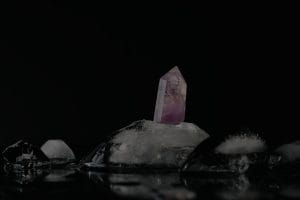Transforming Your Garden: Harnessing Feng Shui for Outdoor Energy
Feng Shui can transform your garden into a serene oasis, enhancing your outdoor space’s energy flow. Discover practical tips to choose the right feng shui items for your garden.
The Essence of Feng Shui in Your Outdoor Space
Feng Shui, an ancient Chinese practice, focuses on harmonizing individuals with their environment. In your garden, the right feng shui items can cultivate positive energy, known as “Chi.” This energy influences how you feel in your outdoor space, impacting relaxation and overall well-being. Choosing the right elements can create a sanctuary that promotes tranquility and joy, drawing you and your loved ones closer to nature.
Identifying Key Areas for Feng Shui Elements
Before selecting feng shui items, assess your garden’s layout. Identify areas that need energy enhancement, such as the entrance, seating areas, or spaces that feel stagnant. Each zone has its unique energy requirements, and by focusing on these areas, you can effectively boost the overall ambiance of your garden. For example, a water feature near the entrance can invite positive energy into your space, setting a welcoming tone.
Choosing the Right Plants for Balance
Plants are essential in feng shui as they symbolize growth and vitality. Select a variety of plants that balance the five elements: wood, fire, earth, metal, and water. Incorporate tall trees for stability, vibrant flowers for joy, and soothing greenery for peace. Consider the colors and shapes of the plants, as they also play a significant role in feng shui. For instance, round leaves promote harmony, while sharp-edged plants can create tension.
Incorporating Water Features for Flow
Water is a powerful symbol in feng shui, representing wealth and abundance. Adding a fountain, pond, or birdbath can enhance the flow of positive energy in your garden. The sound of flowing water can also provide a calming atmosphere, making your outdoor space more inviting. Ensure that the water feature is clean and well-maintained, as stagnant water can attract negative energy, counteracting your efforts.
Utilizing Color and Material Wisely
Color and material choices are vital in feng shui. Each color carries specific energy and can influence emotions. For example, blues and greens evoke tranquility, while reds and yellows inspire warmth and energy. Incorporate these colors through garden decor, furniture, and accessories. Additionally, opt for natural materials like wood and stone to connect with the earth element, fostering a sense of grounding and stability in your garden.
Strategically Placing Feng Shui Symbols
Feng shui symbols, such as wind chimes, lanterns, and statues, can amplify the positive energy in your garden. Place wind chimes in areas where they can catch the breeze, creating soothing sounds that promote relaxation. Lanterns can illuminate pathways, guiding visitors and enhancing safety. Statues, like those of Buddha or animals, can serve as guardians, attracting good fortune and protection.
Regular Maintenance: Keeping the Energy Flowing
To maintain the positive energy in your garden, regular upkeep is essential. Prune overgrown plants, remove debris, and ensure that water features are clean. This ongoing care not only keeps your garden looking beautiful but also ensures that the energy remains vibrant and flowing. Consider seasonal changes and how they affect your garden’s energy, making adjustments as needed.
Creating Your Personal Sanctuary
Ultimately, the goal of incorporating feng shui into your garden is to create a personal sanctuary that reflects your values and desires. By carefully selecting items and arranging them thoughtfully, you can cultivate a space that resonates with peace, joy, and abundance. Engage with your garden regularly, allowing it to evolve and grow alongside you, ensuring it remains a source of positive energy for years to come.










